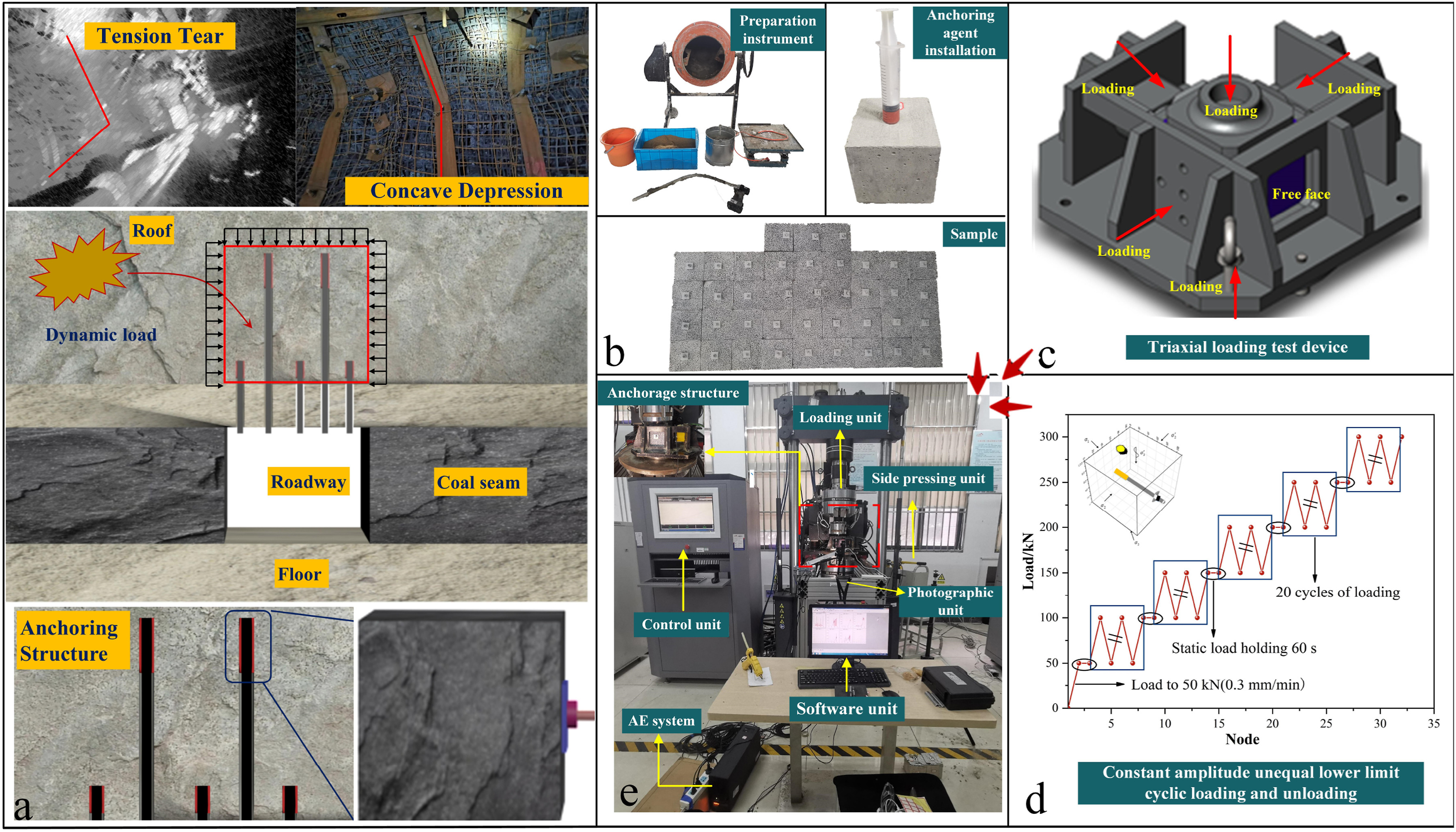JRMGE / Vol 16 / Issue 2
Mechanical responses of anchoring structure under triaxial cyclic loading
Peng Wang, Nong Zhang, Qun Wei, Xingliang Xu, Guangzhen Cui, Aoran Li, Sen Yang, Jiaguang Kan
Show More
a State Key Laboratory of Coal Resources and Safe Mining, School of Mines, China University of Mining and Technology, Xuzhou, 221116, China
b School of Civil Engineering, Xuzhou University of Technology, Xuzhou, 221116, China
c School of Mechanical Engineering, Jiangsu University of Technology, Changzhou, 213001, China
2024, 16(2): 545-560. doi:10.1016/j.jrmge.2023.04.020
Received: 2022-11-19 / Revised: 2023-02-06 / Accepted: 2023-04-11 / Available online: 2023-07-14
2024, 16(2): 545-560.
doi:10.1016/j.jrmge.2023.04.020
Received: 2022-11-19
Revised: 2023-02-06
Accepted: 2023-04-11
Available online: 2023-07-14
Dynamic load on anchoring structures (AS) within deep roadways can result in cumulative damage and failure. This study develops an experimental device designed to test AS under triaxial loads. The device enables the investigation of the mechanical response, failure mode, instability assessment criteria, and anchorage effect of AS subjected to combined cyclic dynamic-static triaxial stress paths. The results show that the peak bearing strength is positively correlated with the anchoring matrix strength, anchorage length, and edgewise compressive strength. The bearing capacity decreases significantly when the anchorage direction is severely inclined. The free face failure modes are typically transverse cracking, concave fracturing, V-shaped slipping and detachment, and spallation detachment. Besides, when the anchoring matrix strength and the anchorage length decrease while the edgewise compressive strength, loading rate, and anchorage inclination angle increase, the failure intensity rises. Instability is determined by a negative tangent modulus of the displacement-strength curve or the continued deformation increase against the general downward trend. Under cyclic loads, the driving force that breaks the rock mass along the normal vector and the rigidity of the AS are the two factors that determine roadway stability. Finally, a control measure for surrounding rock stability is proposed to reduce the internal driving force via a pressure relief method and improve the rigidity of the AS by full-length anchorage and grouting modification.
Keywords: Triaxial stress, Dynamic-static combination load, Cyclic loading, Anchoring structure (AS), Cumulative damage
Article Data
Author(s) Information
Peng Wang

Peng Wang received the Ph.D. degree in mining engineering from China University of Mining and Technology, Xuzhou, China, in 2023. He is currently a post-doctor with the School of Mines, China University of Mining and Technology, Xuzhou, China. His research interests include: (1) Rock Mechanics and Formation Control; (2) Impact dynamic injury; and (3) Anchoring structure damage.

